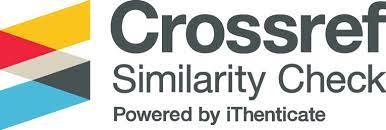Wpływ pandemii COVID-19 na płynność akcji notowanych na Giełdzie Papierów Wartościowych w Warszawie
DOI:
https://doi.org/10.18778/2391-6478.1.33.01Słowa kluczowe:
stock liquidity, Warsaw Stock Exchange, liquidity measures, COVID-19, k-mean methodAbstrakt
The aim of the article is to verify the impact of the COVID-19 pandemic on stock liquidity on the Warsaw Stock Exchange (WSE). In addition the article tries to assess whether the WIG20 index includes companies with the most liquid quotations.
The research was based on an analysis of transaction data of 366 companies listed in the continuous system on the WSE within the January 13–May 15, 2020 period. The analysis was performed using four liquidity measures: average number of transactions per session, average transaction value, average percentage change between transactions, average time distance between transactions in seconds. In order to specify the group of shares with the highest liquidity, a taxonomic analysis was performed using the k-means method.
Results indicate that during the stock sell-off related to the COVID-19 pandemic and directly after the period of market declines, the liquidity of shares of companies listed on the WSE increased, and in each of the analyzed periods, the WIG20 consisted of the most liquid companies. Previous studies have not analyzed this phenomenon, and the results allow researchers to better understand the behavior of investors during stock market shocks.
Pobrania
Bibliografia
Albulescu, C. (2021). COVID-19 and the United States financial markets’ volatility. Finance Research Letters, 38, https://doi.org/10.1016/j.frl.2020.101699
Google Scholar
DOI: https://doi.org/10.1016/j.frl.2020.101699
Al-Awadhi, A., Khaled Alsaifi, K., Al-Awadhi, A. and Alhammadi, S. (2020). Death and contagious infectious diseases: Impact of the COVID-19 virus on stock market returns. Journal of Behavioral and Experimental Finance, 27, https://doi.org/10.1016/j.jbef.2020.100326
Google Scholar
DOI: https://doi.org/10.1016/j.jbef.2020.100326
Apergis, N. and Apergis, E. (2020). Can the Covid-19 pandemic and oil prices drive the US partisan conflict index? Energy Research Letters, 1(1), https://doi.org/10.46557/001c.13144
Google Scholar
DOI: https://doi.org/10.46557/001c.13144
Butler, A., Grullon, G. and Weston, J. (2005). Stock market liquidity and the cost of issuing equity. Journal of Financial and Quantitative Analysis, 40(2), https://doi.org/10.1017/S0022109000002337
Google Scholar
DOI: https://doi.org/10.1017/S0022109000002337
Chai, D., Faff, R. and Gharghori, P. (2010). New evidence on the relation between stock liquidity and measures of trading activity. International Review of Financial Analysis, 19(3), https://doi.org/10.1016/j.irfa.2010.02.005
Google Scholar
DOI: https://doi.org/10.1016/j.irfa.2010.02.005
Chebbi, K., Ammer, M.A. and Hameed, A. (2021). The COVID-19 pandemic and stock liquidity: Evidence from S&P 500. The Quarterly Review of Economics and Finance, 81, https://doi.org/10.1016/j.qref.2021.05.008
Google Scholar
DOI: https://doi.org/10.1016/j.qref.2021.05.008
Chiah, M. and Zhong, A. (2020). Trading from Home: The Impact of COVID-19 on Trading Volume around the World. Finance Research Letters, 37, https://doi.org/10.1016/j.frl.2020.101784
Google Scholar
DOI: https://doi.org/10.1016/j.frl.2020.101784
Djalilov, A. and Ülkü, N. (2021). Individual investors’ trading behavior in Moscow Exchange and the COVID-19 crisis. Journal of Behavioral and Experimental Finance, 31, https://doi.org/10.1016/j.jbef.2021.100549
Google Scholar
DOI: https://doi.org/10.1016/j.jbef.2021.100549
De Bondt, W.F.M. and Thaler, R. (1985). Does the Stock Market Overreact? The Journal of Finance, 40, https://doi.org/10.1111/j.1540-6261.1985.tb05004.x
Google Scholar
DOI: https://doi.org/10.1111/j.1540-6261.1985.tb05004.x
Dufour, A. and Engle, R.F. (2000). Time and the Price Impact of a Trade. The Journal of Finance, 55, https://doi.org/10.1111/0022-1082.00297
Google Scholar
DOI: https://doi.org/10.1111/0022-1082.00297
Fama, E.F. (1965). The behavior of stock-market prices. Journal of Business, 38(1), https://dx.doi.org/10.1086/294743
Google Scholar
DOI: https://doi.org/10.1086/294743
Gatnar, E. (1998). Symboliczne metody klasyfikacji danych. Warszawa: Wydawnictwo PWN.
Google Scholar
Gajdka, J. and Szymański, M. (2020). COVID-19 a polski rynek kapitałowy – czy wyniki finansowe spółek uzasadniają zmiany cen akcji na Giełdzie Papierów Wartościowych w Warszawie? W: Przedsiębiorstwa i instytucje publiczne – zarządzanie, zasoby i kapitał. Warszawa: Wydawnictwo Społecznej Akademii Nauk.
Google Scholar
Gourieroux, C., Jasiak, J. and Le Fol, G. (1999). Intra-day market activity. Journal of Financial Markets, 2(3), https://dx.doi.org/10.1016/S1386-4181(99)00004-X
Google Scholar
DOI: https://doi.org/10.1016/S1386-4181(99)00004-X
Goyenko, R.Y., Holden, C.W. and Trzcinka, C.A. (2009). Do liquidity measures measure liquidity? Journal of Financial Economics, 92(2), https://doi.org/10.1016/j.jfineco.2008.06.002
Google Scholar
DOI: https://doi.org/10.1016/j.jfineco.2008.06.002
Hallin, M., Mathias, C., Pirotte, H. and Veredas, D. (2011). Market liquidity as dynamic factors. Journal of Econometrics, 163(1), https://doi.org/10.1016/j.jeconom.2010.11.005
Google Scholar
DOI: https://doi.org/10.1016/j.jeconom.2010.11.005
Harris, L.E. (1990). Liquidity, Trading Rules and Electronic Trading Systems. Nowy Jork: New York University Salomon Center, Monograph Series in Finance and economics.
Google Scholar
Hevia, C. and Neumeyer, P.A. (2020). A perfect storm: COVID-19 in emerging economies. W: COVID-19 in Developing Economies. Centre for Economic Policy Research.
Google Scholar
Kołodziejczyk, M., Lasota, J. i Piechota, P. (2013). Dyskonto z tytułu braku płynności w wycenie spółek notowanych na GPW. Zeszyty Naukowe Uniwersytetu Szczecińskiego. Finanse, Rynki Finansowe, Ubezpieczenia, 60.
Google Scholar
Kubiczek, J. (2020). Polityka monetarna FED, EBC oraz NBP w obliczu pandemii SARS-CoV-2. W: Ekonomia i finanse w XXI wieku. Wyzwania dla zglobalizowanego świata. Łódź–Kielce: Wydawnictwo Naukowe ArchaeGraph, https://doi.org/10.5281/zenodo.4697021
Google Scholar
Kyle, A.S. (1985). Continous auctions and insider trading. Econometrica, 53(6), https://doi.org/10.2307/1913210
Google Scholar
DOI: https://doi.org/10.2307/1913210
Lin, S., Chen, R., Lv, Z., Zhou, T. and Jin, C. (2019). Integrated measurement of liquidity risk and market risk of company bonds based on the optimal Copula model. The North American Journal of Economics and Finance, 50, https://doi.org/10.1016/j.najef.2019.101004
Google Scholar
DOI: https://doi.org/10.1016/j.najef.2019.101004
Marsh, T. and Rock, K. (1986). Exchange Listing and Liquidity: A Comparison of the American Stock Exchange with the NASDAQ National Market System. Report #2, American Stock Exchange Transactions Data Research Project.
Google Scholar
Naik, P. and Reddy, Y.V. (2021). Stock Market Liquidity: A Literature Review. SAGE Open, 11(1), https://doi.org/10.1177/2158244020985529
Google Scholar
DOI: https://doi.org/10.1177/2158244020985529
Olbryś, J., Sawicka, G. i Nowosada, E. (2021). Recognizing Intra-day Patterns of Stock Market Activity. Dostępne na SSRN 3899820, http://dx.doi.org/10.2139/ssrn.3899820
Google Scholar
DOI: https://doi.org/10.2139/ssrn.3899820
Porcenaluk, P. (2013). Analiza wybranych miar ryzyka płynności dla akcji notowanych na GPW w Warszawie. Prace Naukowe Uniwersytetu Ekonomicznego we Wrocławiu, 323.
Google Scholar
Syamala, S.R., Reddy, V.N. and Goya A. (2014). Commonality in liquidity: An empirical examination of emerging order-driven equity and derivatives market. Journal of International Financial Markets, Institutions and Money, 33, https://doi.org/10.1016/j.intfin.2014.09.001
Google Scholar
DOI: https://doi.org/10.1016/j.intfin.2014.09.001
Stereńczak, S. (2018). Premia z tytułu płynności akcji na polskim rynku kapitałowym (Niepublikowana rozprawa doktorska). Poznań: Uniwersytet Ekonomiczny w Poznaniu.
Google Scholar
Zaremba, A., Aharon, D.Y., Demir, E., Kizys, R. and Zawadka, D. (2021). COVID-19, government policy responses, and stock market liquidity around the world: A note. Research in International Business and Finance, 56, https://doi.org/10.1016/j.ribaf.2020.101359
Google Scholar
DOI: https://doi.org/10.1016/j.ribaf.2020.101359
Zhang, H., Ye, J., Wei, F., Kashif, R.and Cao, C. (2019). Monetary Policy Adjustment, Corporate Investment, and Stock Liquidity—Empirical Evidence from Chinese Stock Market. Emerging Markets Finance and Trade, 55, https://doi.org/10.1080/1540496X.2019.1612363
Google Scholar
DOI: https://doi.org/10.1080/1540496X.2019.1612363
(www1) https://www.gpw.pl/pub/GPW/files/PDF/inwestorzy_w_obrotach_GPW_2020.pdf [dostęp 20.05.2021].
Google Scholar
(www2) https://raportzintegrowany2019.gpw.pl/2019-en-organizational-structure [dostęp 20.05.2021].
Google Scholar
Pobrania
Opublikowane
Jak cytować
Numer
Dział
Licencja

Utwór dostępny jest na licencji Creative Commons Uznanie autorstwa – Użycie niekomercyjne – Bez utworów zależnych 4.0 Międzynarodowe.














